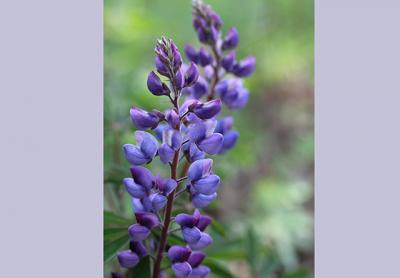Nature Notes: Airport Angst

As we go deeply into the autumn and the leaves fall at an ever-quickening pace, thoughts of the next spring gird us for the coming winter. We hope it will be as wonderful as the last and that the flowers and leaves will burst out with a vengeance, having slept long and deep through the cold and snow of winter.
The South Fork has just about every kind of habitat found on Long Island: pitch pine barrens, oak and hickory deciduous forests, grasslands, wetlands of a hundred different varieties, and beds of underwater eelgrass and marine algae. No matter all of the slings and arrows that the habitats and niches have had to contend with as the land was cleared for houses and farming, then for paved roads and railroads, all of the different mini biomes have survived to date in some form or fashion.
Housekeeping reforms and community preservation funds came into being in the nick of time to ensure that this wonderful collection of multicolored parts lasts into the future, no matter what storms, fires, and other acts of God may beset them. We are evolving into better stewards of the landscape, not destroyers of it, with each passing day, and not a minute too soon.
That is why, having come this far in a matter of decades, it is very puzzling to think that we would resort to our barbaric past and remove this or that part of the natural landscape because some higher authority would have us do so. In this case, I’m thinking about the Federal Aviation Administration, which wants the town to cut down a large number of trees around the airport, trees that are removing carbon dioxide from the atmosphere, battling the exhausts from the planes and helicopters while doing so.
One of the arguments raised by the local powers that be to support such a move is that the flora on the edge of the already-cleared airport lands is not as diverse and unusual as that inside the deeper part of the woods. Just the opposite is true. The edge flora in the form of an “ecotone,” a transition area between biomes, is the most interesting of all, and the most likely to contain the rarest species.
Some readers may remember the wonderful ecotones that thrived between the pavement and the trees in East Hampton’s Northwest Woods 20 years ago. The shoulders of Old Northwest Road, Bull Path, Two Holes of Water, and Swamp Road were ablaze with wild violets, blue lupines, orange milkweeds, at least two orchid species, and many other pretty and rare plants that bloomed until the asters and goldenrods set seed in October. The Highway Department unwittingly brought in soils to raise the shoulders of those flowers disappeared and have yet to return.
Ironically, one of the few spots where some of these very same flowers have persisted is in the ecotones between the mowed airport fields and the surrounding woodlands. The lupines are particularly resplendent in these ecotones, especially at the west end of the field that reaches all the way to Town Line Road.
Now, the town is thinking of doing these in, too. I’m reminded of an earlier time when an agent from the F.A.A. stopped me at the airport and said I should remove the bluebird boxes from these same airfield ecotones. “Hmm,” I thought to myself. “You mean the beautiful bluebird, the state bird of New York, could harm one of those large jets or helicopters?” I told her I would think about it (but not for very long).
Larry Penny can be reached via email at [email protected].
